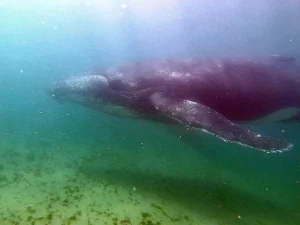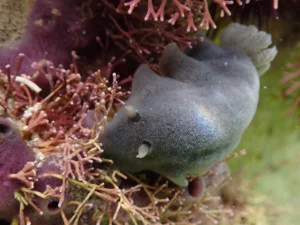Bioluminescence is a captivating natural phenomenon which occurs when living organisms generate light through internal chemical reactions. It is observed throughout a wide range of ecosystems in a number of different species, including fish, cephalopods such as octopus and squid, bacteria, fungi, fireflies and phytoplankton.
Bioluminescence is a ‘cold light’ that emits minimal heat, and is utilised for mimicry, distraction, mate attraction, warning, and illumination. The biochemical reaction underlying bioluminescence occurs within specialised cells known as photophores, containing luciferin and luciferase. When luciferin reacts with oxygen in the presence of luciferase, it undergoes oxidation, releasing light.

Perhaps the most well-known bioluminescent phenomena occurs in the ocean, where blooms of phytoplankton, which when disturbed emit radiant blue-green light, transform the water into a glowing spectacle. Phytoplankton serve as the foundation of the marine food web, as they occupy the primary trophic level, and do not rely on other organisms for sustenance.
The most notable of the bioluminescent phytoplankton species are dinoflagellates, specifically those belonging to the genera Pyrocystis, Noctiluca, and Dinoflagellata. When stimulated by mechanical disturbance such as boat movement, swimming, or waves, these organisms emit a brief blue flash lasting approximately 0.1 seconds. Consequently, when mechanically agitated, a sparkling blue light can be observed from the sea surface. It can also be seen underwater and can make for an unforgettable night dive. Phytoplankton bioluminescence follows a circadian rhythm, occurring exclusively during nighttime hours.
When threatened, these organisms emit bursts of light that startle or confuse predators, allowing the phytoplankton to evade capture. Additionally, bioluminescent displays play a vital role in the mating and reproductive strategies of phytoplankton. Certain species emit specific light patterns to attract mates during their reproductive cycles, ensuring successful fertilisation and contributing to the genetic diversity of the population. Furthermore, the light emitted by bioluminescent phytoplankton serves as a beacon for zooplankton and small fish, drawing them in a phenomenon known as bioluminescent luring.
The bioluminescent activity of phytoplankton is influenced by various environmental factors, including nutrient availability, water temperature, and the presence of predators. Bioluminescence, as a natural phenomenon, is not inherently harmful and instead serves various ecological functions. However, certain circumstances can associate bioluminescence with harmful effects. For instance, some species of bioluminescent phytoplankton contribute to harmful algal blooms, producing toxins that can harm marine life and pose risks to human health during events like ‘red tides.’ These blooms occur when phytoplankton grow rapidly and accumulate in high densities, often triggered by factors such as nutrient enrichment, warmer temperatures, and calm water conditions. These toxins, such as saxitoxin and domoic acid, can have deleterious effects on marine organisms, including fish, shellfish, marine mammals (notably seals), and seabirds. When these organisms consume toxic algae or ingest contaminated prey, they can experience poisoning, illness, or death. Additionally, these toxins can bioaccumulate in the food chain, posing risks to human health if consumed through contaminated seafood.
Therefore, while bioluminescence itself is not harmful, it is essential to consider its ecological context and potential impacts, particularly in instances where it is associated with harmful algal blooms or ecological disruption.



